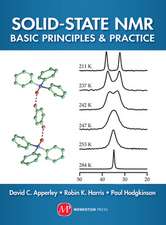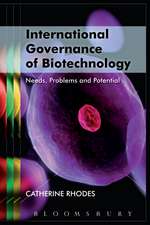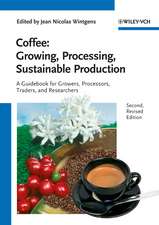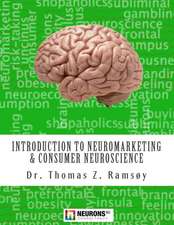Getting to the Heart of Science Communication: A Guide to Effective Engagement
Autor Faith Kearnsen Limba Engleză Paperback – 11 mai 2021
At a community fire day in a northern California town several years ago, author Faith Kearns gave a talk on building fire-safe houses able to withstand increasingly common wildfires. Much to her surprise, Kearns was confronted by an audience member whose house had recently burned. What she thought was straightforward, helpful scientific information had instead retraumatized audience members, forcing Kearns to reevaluate her approach. Like Kearns, scientists today working on controversial issues from climate change to drought to COVID-19 are finding themselves more often in the middle of deeply traumatizing or polarized conflicts. It is no longer enough for scientists to communicate a scientific topic clearly. They must not only be experts in their fields of study, but also experts in navigating the thoughts, feelings, and opinions of members of the public they engage with, and with each other. And the conversations are growing more fraught.
In Getting to the Heart of Science Communication, Faith Kearns has penned a succinct guide for navigating the human relationships critical to the success of practice-based science. Using interviews and personal anecdotes, as well as her own insights as a field scientist, Kearns walks readers through the evolution of science communication and how emotional and high-stakes issues have shaped communication. The meat of the book lies in the middle chapters, where Kearns offers key tools for communicators: listening, working with conflict, and understanding trauma, loss, and healing. She concludes the book with a substantive discussion on diversity, equity, and inclusion in science communication, and advice to readers for handling their own emotional needs in an unpredictable career landscape.
This meticulously researched volume takes science communication to the next level, helping scientists see the value of listening as well as talking, understanding power dynamics in relationships, and addressing the roles of trauma, loss, grief, and healing. This book will particularly resonate with early to mid-career scientists, graduate students, and researchers, especially those in applied sciences who work closely with the public.
In Getting to the Heart of Science Communication, Faith Kearns has penned a succinct guide for navigating the human relationships critical to the success of practice-based science. Using interviews and personal anecdotes, as well as her own insights as a field scientist, Kearns walks readers through the evolution of science communication and how emotional and high-stakes issues have shaped communication. The meat of the book lies in the middle chapters, where Kearns offers key tools for communicators: listening, working with conflict, and understanding trauma, loss, and healing. She concludes the book with a substantive discussion on diversity, equity, and inclusion in science communication, and advice to readers for handling their own emotional needs in an unpredictable career landscape.
This meticulously researched volume takes science communication to the next level, helping scientists see the value of listening as well as talking, understanding power dynamics in relationships, and addressing the roles of trauma, loss, grief, and healing. This book will particularly resonate with early to mid-career scientists, graduate students, and researchers, especially those in applied sciences who work closely with the public.
Preț: 200.93 lei
Nou
Puncte Express: 301
Preț estimativ în valută:
38.45€ • 40.43$ • 31.77£
38.45€ • 40.43$ • 31.77£
Carte disponibilă
Livrare economică 26 martie-09 aprilie
Livrare express 12-18 martie pentru 31.12 lei
Preluare comenzi: 021 569.72.76
Specificații
ISBN-13: 9781642830743
ISBN-10: 1642830747
Pagini: 280
Dimensiuni: 152 x 229 x 18 mm
Greutate: 0.48 kg
Editura: Island Press
Colecția Island Press
ISBN-10: 1642830747
Pagini: 280
Dimensiuni: 152 x 229 x 18 mm
Greutate: 0.48 kg
Editura: Island Press
Colecția Island Press
Notă biografică
Faith Kearns is a scientist and science communication practitioner who focuses primarily on water, wildfire, and climate change in the western United States. Her work has been published in New Republic, On Being, Bay Nature, and more. She has been working in the science communication field for more than 25 years, starting with the Ecological Society of America and going on to serve as a AAAS Science and Policy Fellow at the US Department of State, manage a wildfire research and outreach center at the University of California, Berkeley, and bridge science and policy advocacy efforts at the Pew Charitable Trusts. She currently works with the California Institute for Water Resources. Kearns holds an undergraduate environmental science degree from Northern Arizona University, and a doctorate in environmental science, policy, and management from the University of California, Berkeley.
Cuprins
Foreword
Preface
Acknowledgments
Introduction
PART I. The Evolution of Science Communication
Chapter 1. Science Communication from the Ground Up
Chapter 2. Science Communication Careers Today
Chapter 3. Navigating Facts and Feelings in Science Communication
PART II. The Tools of Science Communication
Chapter 4. Relating
Chapter 5. Listening
Chapter 6. Working with Conflict
Chapter 7. Understanding Trauma
PART III. The Future of Science Communication
Chapter 8. Equitable, Inclusive, and Just Science Communication
Chapter 9. Self-Care and Collective Care
Chapter 10. What More Is Possible?
Notes
About the Author
Preface
Acknowledgments
Introduction
PART I. The Evolution of Science Communication
Chapter 1. Science Communication from the Ground Up
Chapter 2. Science Communication Careers Today
Chapter 3. Navigating Facts and Feelings in Science Communication
PART II. The Tools of Science Communication
Chapter 4. Relating
Chapter 5. Listening
Chapter 6. Working with Conflict
Chapter 7. Understanding Trauma
PART III. The Future of Science Communication
Chapter 8. Equitable, Inclusive, and Just Science Communication
Chapter 9. Self-Care and Collective Care
Chapter 10. What More Is Possible?
Notes
About the Author
Recenzii
"The book holds lessons for anyone who wants to take on the challenge of talking about loaded scientific topics, and it addresses misconceptions and oversimplifications about the best way to do it."
“In Getting to the Heart of Science Communication, Faith Kearns reminds readers that how a scientist presents his or her research can drastically affect how people outside of academia think, and especially how they feel, about a given topic …The book offers a view from the front lines of science communication, profiling practitioners who explain their journeys and share stories of relationship building and community engagement.”
"With more than 25 years of experience as a science communicator, Kearns has a persuasive vision for how to improve the relationship between science and the public.... This book is written for professional science communicators but will appeal to anyone interested in a growing field, and it offers good advice about communication that applies far beyond the confines of science."
"Kearns provides a practitioner’s perspective, supplemented by dozens of examples from working scientific communicators that reveal the pleasures, challenges, and stresses of their work…. They both reinforce the humanity of scientific communication and its practitioners, and represent concise case studies of how communication succeeds or fails."
“Increasingly, those of us who work within the science fields are put on the spot in terms of having to not only share the facts of our research but also find diplomatic ways to have a meaningful conversation about what the facts mean …. A terrific first step to handling these increasingly unpredictable conversations is to read Faith Kearns’ recent book.”
"Ms. Kearns demonstrates that we will only be successful in reaching people if we engage with them in a personal way rather than working from the belief that all we need to do is provide information. Objectivity prevents us from connecting with our audiences."
"Dr. Kearns has given us much-needed tools for sharing science with empathy, engagement, and the full humanity that our audiences deserve. A brave and brilliant guide to the shifting terrain of science communication."
"Getting to the Heart of Science Communication is a must-read for amateurs and professionals alike. The book presents tangible ways to engage in science communication that is justice-centered and meets the environmental and societal challenges of today. Kearns delivers thoughtful and transformational advice on addressing power and accountability in the sciences."
“In Getting to the Heart of Science Communication, Faith Kearns captures the voices of real science communication practice—and maps where we need to go to build public trust in science, relationship by relationship. This is the book the field needs now."
Descriere
Scientists today working on controversial issues from climate change to drought to COVID-19 are finding themselves more often in the middle of deeply traumatizing or polarized conflicts they feel unprepared to referee. It is no longer enough for scientists to communicate a scientific topic clearly. They must now be experts not only in their fields of study, but also in navigating the thoughts, feelings, and opinions of members of the public they engage with, and with each other. And the conversations are growing more fraught.
In Getting to the Heart of Science Communication, Faith Kearns has penned a succinct guide for navigating the human relationships critical to the success of practice-based science. This meticulously researched volume takes science communication to the next level, helping scientists to see the value of listening as well as talking, understanding power dynamics in relationships, and addressing the roles of trauma, loss, grief, and healing.
In Getting to the Heart of Science Communication, Faith Kearns has penned a succinct guide for navigating the human relationships critical to the success of practice-based science. This meticulously researched volume takes science communication to the next level, helping scientists to see the value of listening as well as talking, understanding power dynamics in relationships, and addressing the roles of trauma, loss, grief, and healing.


















